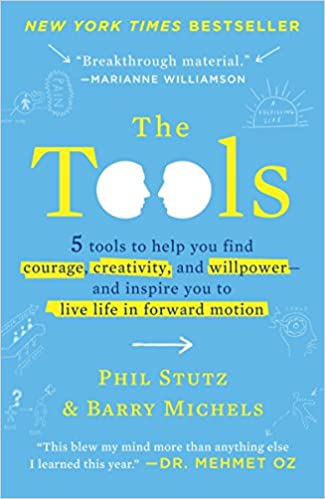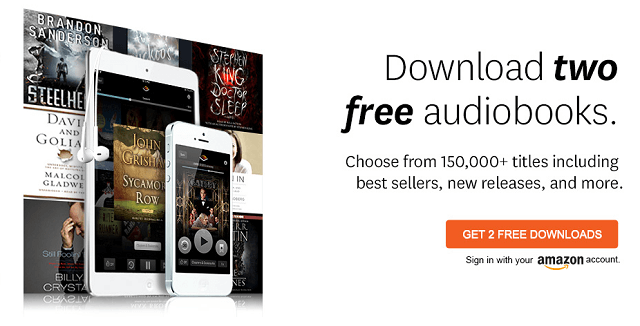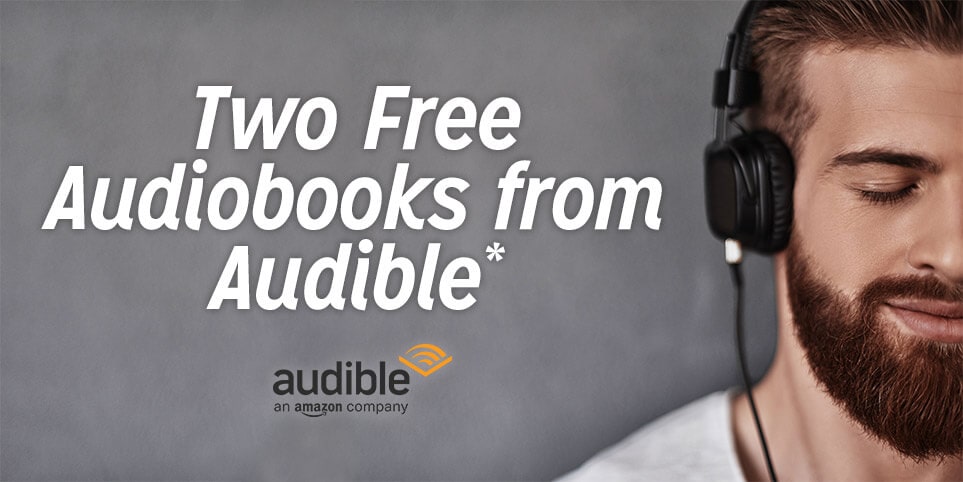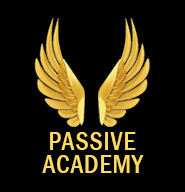The Tools by Phil Stutz Book Summary
The Book in 1 Sentences
“Between the two of us, Phil and I have sixty years of psychotherapy experience. Based on this experience, we’ve identified four fundamental problems that keep people from living the lives they want to live. How much happiness and satisfaction you get out of life will depend on how well you can free yourself from those problems.
Each of the next four chapters addresses one of these. Each chapter also provides you with the tool that works most effectively on that problem. We’ll explain how the tool connects you to a higher force—and we’ll explain how that force solves your problem. …
The health of our society depends on the efforts of each individual. Every time one of us gains access to higher forces, all of us benefit. That places a special responsibility on those who know how to use the tools. They become the first to bring higher forces to the rest of the society.
They are pioneers, building a new, reinvigorated community. I wake up every morning grateful that higher forces are there. They never stop revealing themselves in new ways. Through this book we share their magic with you. We’re excited about the journey you’re about to undertake.” ~ Phil Stutz & Barry Michels
8 BIG Ideas
3. Willpower is the most important tool
4. The Consumer vs. The Creator
5. A human being = a work in progress
The Tools Book Summary
1. That’s what a tool is
“A change in attitude won’t stop you from screaming because attitudes can’t control behavior;
they’re not strong enough. To control behavior you need a specific procedure to use at a specific time to combat a specific problem. That’s what a tool is. ...
The point is that a tool—unlike an attitude adjustment—requires you to do something. Not only does it take work, it’s work you have to do over and over again—every time you get frustrated.
A new attitude means nothing unless followed by a change in behavior. The surest way to change behavior is with a tool.”
“If changing your life were only a matter of attitude, you wouldn’t need this book. Real change requires you to change your behavior—not just your attitude.”
2. The 5 Tools
Tool #1: The Reversal of Desire
The Higher Force: Forward Motion
Learn to love pain! and use it to catalyze your growth.
"Close your eyes and use the Reversal of Desire on something you normally avoid. Feel yourself starting to move forward. Now see those around you, inspired by your forward motion, using the tool on whatever they’re avoiding. See millions of people embracing pain and as a result, moving forward in their lives. How does the society you’re imagining look different from the one we have now?"
Tool #2: Active Love
The Higher Force: Outflow
Beam them love!
"Close your eyes and imagine someone whose ideas offend you deeply. Use Active Love on that person. Now use it again, but this time imagine the whole society using the tool on someone who offends them. How does society change with millions of people channeling this all-accepting force?"
Tool #3: Inner Authority
The Higher Force: Self-Expression
Trust yourself...
"Close your eyes and visualize your Shadow. Feel how embarrassed you would be if it were revealed to other people. Imagine millions of people around you feeling the same way about their Shadows, doing everything they can to conceal them. What happens to a society in which everyone’s hearts are closed off to one another?
Now, tell your Shadow you’ve been horribly mistaken, that you cannot be whole without it. Imagine millions of people saying the same thing to their Shadows. What can this open-hearted society do that the earlier one couldn’t?"
Tool #4: The Grateful Flow
The Higher Force: The Source
"Close your eyes and start ruminating on your dissatisfactions. Then, imagine the entire society around you in a similar, discontented state. How does this affect people’s sense of responsibility for one another?
Now, erase that image and do the Grateful Flow. Feel yourself overwhelmed with appreciativeness for everything you’ve been given from the day you were born. Now see millions of people around you using the tool and overflowing with gratefulness. How does this affect people’s sense of responsibility for one another? How is the society you’re envisioning now different from the one you started with?"
Tool #5: Jeopardy
The Higher Force: Willpower
"Close your eyes and return to the image of the deathbed self you saw in Chapter 6. He sees your paralysis in the situation you picked and exhorts you not to waste the present moment, creating an urgent pressure to act. With your eyes still closed, relax for a moment and look around you.
Check out the book for more goodness about these 5 tools...
3. Willpower is the most important tool
“Very few models of human growth accept this, let alone give you a way to build your willpower. Instead, they pretend it’s easy to change your life. It isn’t. Our approach is the opposite: we’re telling you the truth about how difficult it’s going to be—and we’re going to make you strong enough to face the challenge.
Doing that means increasing your willpower—which is what the fifth tool does. In a sense it’s the most important one—the tool that makes sure you keep using the other tools. It won’t matter how effective the other four are if you don’t use them.”
“To reiterate: as human beings we are given access to the infinite, but we have to work for it; it doesn’t come for free.”
4. The Consumer vs. The Creator
“The consumer expects a reward for the slightest effort—or better, for no effort at all. He cares only about what he gets from the world, not about what he might add to it. Living on the surface, jumping from thing to thing, his energy is diffused, like milk spreading across a tabletop. He makes no impact on the world; when his time on earth is over, it’s as if he never lived.
The creator won’t accept that fate. Everything he does is with the intention of making an impact on the world. His code ensures this: He doesn’t accept the world as he finds it; he brings things into the world that aren’t already there. He doesn’t follow the herd; he sets his own course. He ignores the reactions of others. He resists superficial distractions. He remains focused on his goals even if he has to sacrifice his immediate gratification.
Anyone can live by this code, but very few of us do. It means putting your life in the service of higher forces. These forces can’t be found on the surface of life; they’re found in its depths. The creator’s energy must have the singular focus of a drill boring through stone. As difficult as that is, a creator is rewarded many times over for his efforts.”
5. A human being = a work in progress
“I can confidently predict that you’re going to find yourself in the exact same boat. You’ll try the tools, love what they do for you, and yet you’ll stop using them. How can this be so widespread? The answer is that our entire culture has an unreal view of what it means to be human.
We like to think of ourselves as finished products—complete on our own. We’re not. To be whole, we need to stay connected to something beyond ourselves. The constant effort that requires means that a human being can never be more than a work in progress.”
“I began to understand what faith really meant: faith is the confidence that higher forces are always there to help when you need them.”
6. Learn to drive through pain
“A few rare individuals refuse to have limited lives. They drive through tremendous amounts of pain—from rejections and failures to shorter moments of embarrassment and anxiety. They also handle the small, tedious pain required for personal discipline, forcing themselves to do things we all know we should do but don’t—like exercising, eating right, and staying organized. Because they avoid nothing, they can pursue their highest aspirations. They seem more alive than the rest of us.”
“Human beings are only happy when they are reaching toward their highest potential. Paracelsus, a Renaissance physician and mystic, put it this way: “Happiness does not consist in laziness... In labour and in sweat must each man use the gifts that God conferred upon him on earth.””
7. Stay connected
“Think of your mind as a newly bought, state-of-the-art, flat-screen TV. You eagerly take it out of the box, but it won’t play. An electrical connection has come loose; there’s no buying a new connection, you have to fix it with your own effort.
Worse, the connection will keep coming loose—you’ll have to fix it every day. But the broken connection in your mind isn’t to electrical power, it’s to higher forces. And every time the connection breaks, one of your personal problems appears.
The tools repair the connection—that’s why they work. But the connection never lasts; it will break again. That makes using tools a task without end.”
“Real happiness is the constant presence of higher forces in our lives.”
8. Become a creator, change yourself and change the world
“Let’s imagine what this might look like: Close your eyes and use the Reversal of Desire on something you normally avoid. Feel yourself starting to move forward. Now see those around you, inspired by your forward motion, using the tool on whatever they’re avoiding.
See millions of people embracing pain and as a result, moving forward in their lives. How does the society you’re imagining look different from the one we have now? When millions of individuals stop avoiding and start moving forward, there are no social problems they cannot solve. It’s only a society that embraces pain that will lead the way for the rest of the world. …
To help you become a creator, the book has to do more than convey ideas; it has to awaken higher forces inside you. To keep those forces vital, you will have to use the tools long after you finish reading it—in fact, for the rest of your life.
That’s our ultimate goal: for you to maintain an unending relationship with higher forces. Call us crazy, but nothing less will satisfy us. And if you aspire to be a creator, nothing less will satisfy you.”
That was my QUICK summary of the great book The Tools by Phil Stutz. If you’re interested, get your copy. There is a HUGE amount of life-changing ideas in this book, and we’ve only touched on a tiny bit of it.
Buy The Book: The Tools by Phil Stutz

GET Blinkist 7 Days FREE Trial
3000+ Book Summaries
(Audio and Text)








